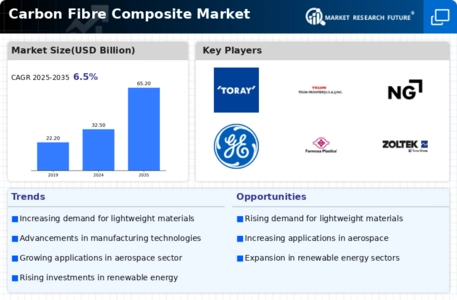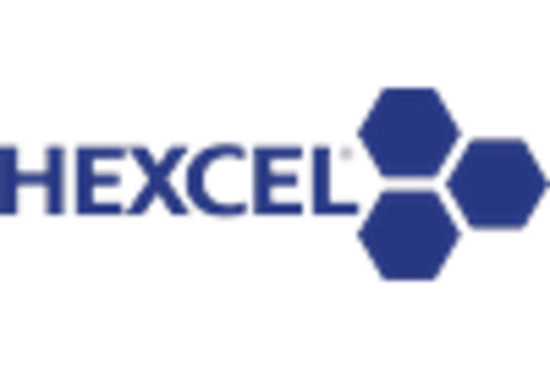Expansion in Automotive Applications
The automotive industry is increasingly incorporating carbon fibre composites to enhance vehicle performance and reduce weight. This shift is largely influenced by the growing emphasis on fuel efficiency and emissions reduction. The Carbon Fibre Composite Market is experiencing a transformation as manufacturers adopt these materials in high-performance vehicles, electric cars, and luxury models. In 2025, the automotive segment is anticipated to represent a significant portion of the market, driven by advancements in manufacturing processes that lower costs and improve accessibility. As automakers strive to meet evolving consumer preferences and regulatory requirements, the demand for carbon fibre composites is likely to escalate, fostering innovation and competitiveness within the sector.
Increasing Demand in Aerospace Sector
The aerospace sector is witnessing a notable surge in the adoption of carbon fibre composites due to their lightweight and high-strength properties. This trend is driven by the need for fuel efficiency and performance enhancement in aircraft design. The Carbon Fibre Composite Market is projected to grow as manufacturers increasingly utilize these materials to reduce overall aircraft weight, thereby improving fuel economy. In 2025, the aerospace segment is expected to account for a substantial share of the market, reflecting a shift towards advanced materials that meet stringent regulatory standards. The integration of carbon fibre composites in both commercial and military aircraft is likely to bolster market growth, as companies seek to innovate and enhance operational efficiency.
Government Initiatives and Regulations
Government policies and regulations aimed at promoting sustainable materials are influencing the growth of the carbon fibre composite market. Many countries are implementing initiatives to reduce carbon emissions and encourage the use of advanced materials in various industries. The Carbon Fibre Composite Market is likely to benefit from these regulatory frameworks, which may provide incentives for manufacturers to adopt carbon fibre composites in their products. By 2025, the impact of these initiatives could lead to increased investment in research and development, fostering innovation and expanding the market. As governments prioritize sustainability, the demand for carbon fibre composites is expected to rise, aligning with broader environmental goals.
Technological Innovations in Manufacturing
Technological advancements in the production of carbon fibre composites are playing a crucial role in shaping the market landscape. Innovations such as automated manufacturing processes and improved resin systems are enhancing the efficiency and quality of composite materials. The Carbon Fibre Composite Market is benefiting from these developments, which not only reduce production costs but also expand the range of applications for carbon fibre composites. As manufacturers adopt cutting-edge technologies, the market is expected to witness increased output and a broader array of products. By 2025, the impact of these innovations may lead to a more competitive environment, encouraging further investment and research in composite materials.
Rising Demand in Sports and Recreational Equipment
The sports and recreational equipment sector is increasingly turning to carbon fibre composites for their superior performance characteristics. This trend is particularly evident in high-end bicycles, golf clubs, and other sporting goods where weight reduction and strength are paramount. The Carbon Fibre Composite Market is poised to benefit from this growing demand, as manufacturers seek to enhance product performance and appeal to consumers. In 2025, the market for carbon fibre composites in sports equipment is expected to expand significantly, driven by consumer preferences for lightweight and durable products. This shift may also encourage innovation in design and functionality, further solidifying the role of carbon fibre composites in the sports industry.


















Leave a Comment